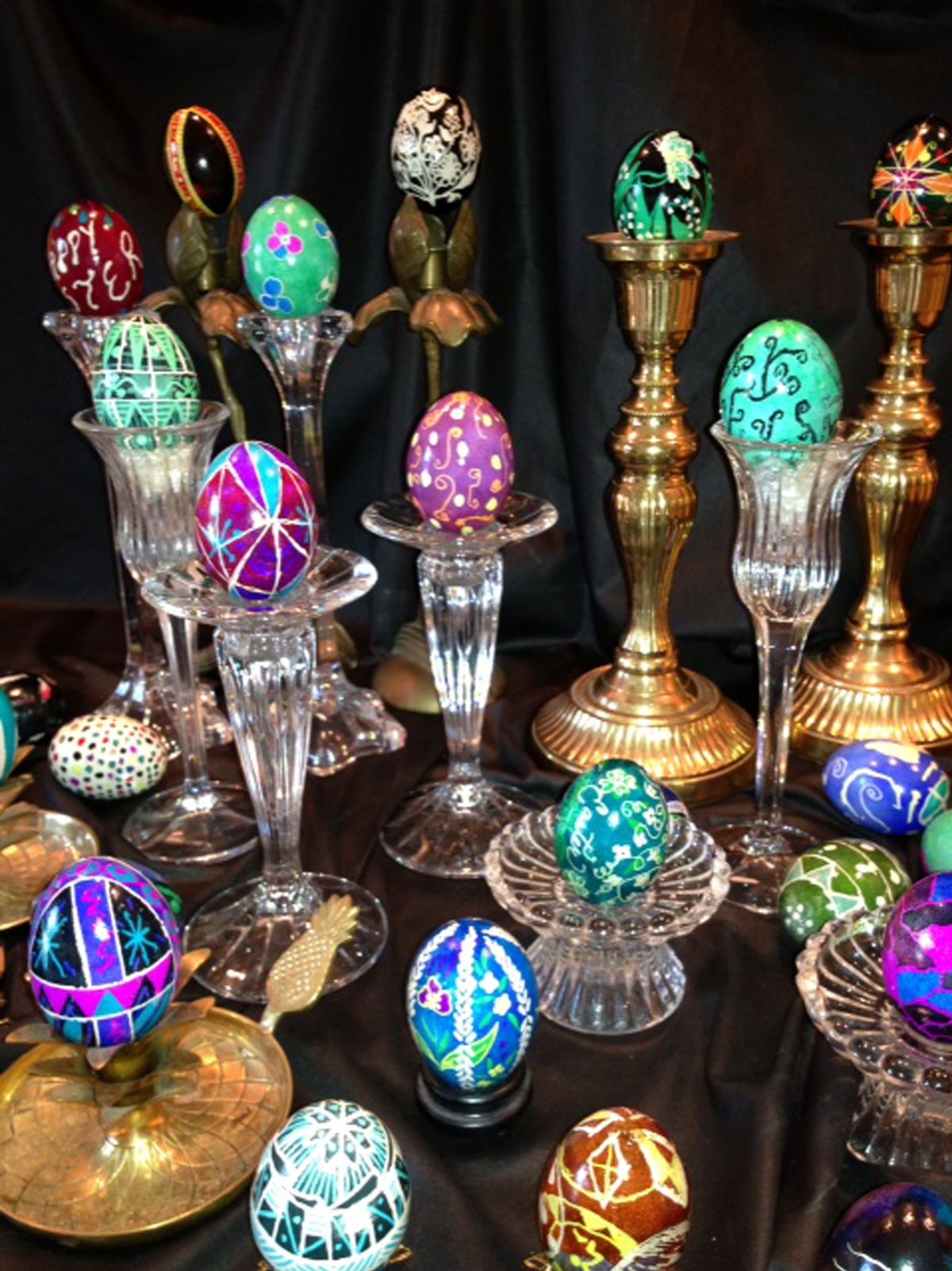Ornamental eggs
Ukrainian craft of pysanky produces glossy, keepsake creations

NEWPORT NEWS, Va. - The Easter bunny would be envious if he could see the fancy eggs at Marcy Avery’s home in Yorktown, Va.
Instead of eggs plainly dyed in pinks, greens and yellows, the eggs resemble elegant jewels too precious to touch. They are created with a hot wax and dye technique called pysanky, a Ukrainian craft that uses a wax-resist method similar to batik. Designs are not painted on, but instead are written with beeswax and then revealed through a dye and wax-melting process.
“It’s a fun way for my friends to have a creative get-together,” said Avery, who has an art degree from Virginia Tech, retired from public school teaching and now offers art lessons in her home studio.
“Since it’s Easter season, pysanky eggs were the perfect choice to get our creative juices flowing.”
Avery learned the art form during extra community college classes, and then wrote a high school curriculum that required students to replicate native crafts of various cultures, using similar tools, techniques and indigenous designs, she says.
Materials for the pysanky process include inexpensive white eggs (porous shells absorb dyes better and result in intense colors), powdered aniline dye mixed with white vinegar and distilled water, a tool called a kistka (a copper funnel attached to a handle; wax is scooped into the funnel, heated and then drawn on the egg), beeswax candle, tissues to remove melted wax from the egg, No. 2 pencils to lightly draw designs on the eggs, drying rack and oil-based vanish or polyurethane to seal the eggs.
“Basically, liquid hot wax is applied to the egg with the kistka,” Avery said.
“The wax seals the egg color and resists the remaining dyes. The egg is dipped into dyes, from lightest to darkest colors. After removing the egg from each dye bath, more hot wax is applied to the egg to seal in the newest color. This process is repeated until the final dye bath, after which the wax is removed revealing the multi-color design.
“Depending on the complexity of the design, each egg may take two to four hours or longer for the initial waxing and dyeing process. The egg must then be varnished.”
While the process sounds intense and complicated, it actually becomes easier and quicker once you get the hang of the steps, Avery said.
“There were 10 of us working on eggs in Marcy’s studio, yet there was little talking,” said Teri Cheslak of Yorktown, who took a class with her daughter. “Marcy has music playing softly, and there was a real feeling of calm, people were enjoying this method of expression.”
The added beauty of pysanky is that it can be displayed year-round because the designs do not have to be seasonal. The eggs can also be hung as Christmas or Easter ornaments, grouped in a decorative glass bowl or basket. They are especially eye catching when displayed on brass and glass candlesticks of all sizes and shapes.
“Even if you doubt your art ability, you can create these lovely pieces,” Avery said.